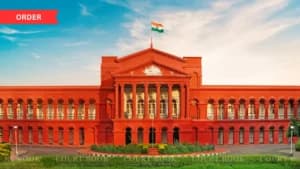New Delhi, November 2025 - In a rather unusual scene at the Supreme Court complex this week, officials from the Centre for Research and Planning (CRP) quietly released a 63-page report examining how India’s highest court has spoken about caste for the past seventy-five years. The document, titled Report on Judicial Conceptions of Caste, is not a judgment, but it reads almost like a mirror held up to the judiciary’s own language. And the reflection is complicated.
The report walks through Constitution Bench rulings-from the earliest cases on reservations to debates around personal laws-and points out that judicial language has often swung between empathy and stereotypes, between sociological realism and idealised scripture-based narratives. One official involved in the compilation said quietly, “The Court has evolved, no doubt, but the contradictions are too big to ignore.”
Read also:- Supreme Court Faces New Twist as Kuki Group Accuses Manipur Police of Sending Edited Audio Clips in Probe Linked to Former CM Biren Singh
At the heart of the findings is a striking inconsistency. In some judgments, caste is recognised as a rigid, hereditary system tied to occupation, stigma, and deep social exclusion. Other judgments, sometimes from the very same era, describe it as something that began as a benign division of labour but later “hardened.” One of the report’s authors notes that this version risks “downplaying the centuries of oppression,” a sentiment that appears repeatedly in the analysis.
The report doesn’t stop there. It also highlights uncomfortable metaphors used by judges in the past-comparing oppressed castes to “handicapped” participants in a race or describing reservations as “crutches.” These, the report argues, unintentionally reproduced stigma rather than dismantling it. A senior researcher summarised it bluntly during the briefing: “If the Constitution sees reservation as corrective justice, calling it a handicap is simply the wrong vocabulary.”
Read also:- Supreme Court Raps Tenant for 5-Year Non-Payment, Restores Eviction Orders in Kochi Shop Dispute: Detailed Analysis of Landmark Ruling
Perhaps the most vivid passages come from the section on “merit.” Several older judgments linked reservation with a presumed lowering of standards. The report counters this with contemporary academic evidence showing that public-sector performance did not fall-indeed sometimes improved-when reservations were implemented. “Merit,” the report remarks, “is socially constructed.” That line alone created a murmur among the lawyers reading through the pages.
Another fascinating part deals with caste across religions. While some benches described caste as something limited to Hindu theology, others documented how caste-linked hierarchies appear among Christians, Muslims, and Sikhs too. The report suggests this is more than a conceptual disagreement-it shapes how the Court understands backwardness itself.
The report also points to progressive shifts. In certain landmark concurring opinions, judges spoke openly of historical discrimination, the constitutional duty to dismantle caste prejudice, and the need to recognise dignity as the true measure of equality. One line from a 2018 opinion is quoted prominently: “Security from oppression and an opportunity to lead a dignified life is an issue of existence for Dalits.”
Read also:- Supreme Court Steps In After Years of Neglect, Orders Urgent Action to Save Jojari–Bandi–Luni
Yet those moments of clarity sit alongside older paternalistic language-an unevenness the report calls “a challenge for future judicial training.”
What makes this document unusual is its candour. The CRP, which operates within the Supreme Court’s own registry, is careful to clarify that the study is not criticising individual judges. Instead, it urges the judiciary to consciously adopt language that aligns with the Constitution’s promise of equality. As one observer remarked after the release, “It’s rare for the Court to scrutinise its own vocabulary. This could mark a turning point.”
For now, the report ends not with recommendations but an invitation-asking judges, scholars, and policymakers to rethink how caste is spoken about in India’s courtrooms. And maybe that is the decision that matters most.
Title: Report on Judicial Conceptions of Caste
Document Type: Research Report (Not a Case / Not a Judgment)
Published By: Centre for Research and Planning (CRP), Supreme Court of India
Publication Date: November 2025
Authors:
- Dr. Anurag Bhaskar
- Dr. Farrah Ahmed
- Bhimraj Muthu
- Shubham Kumar










